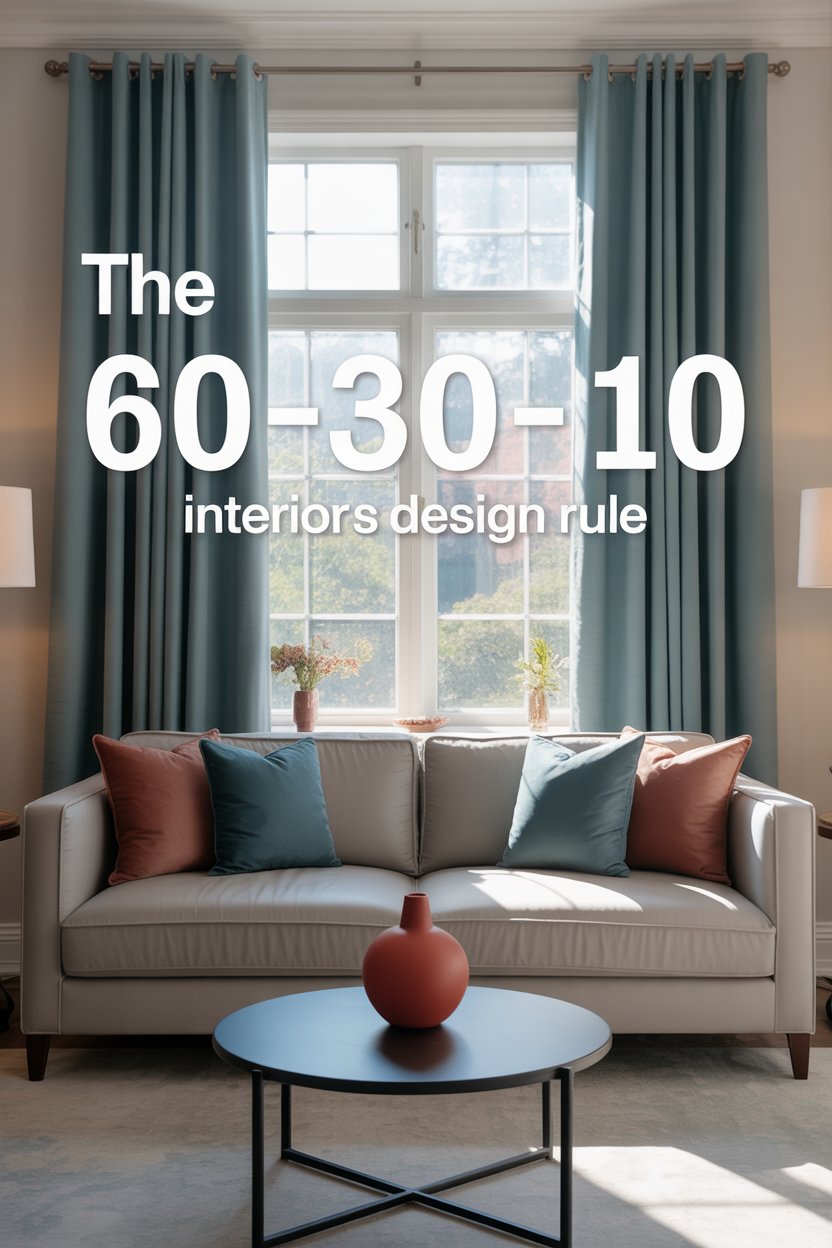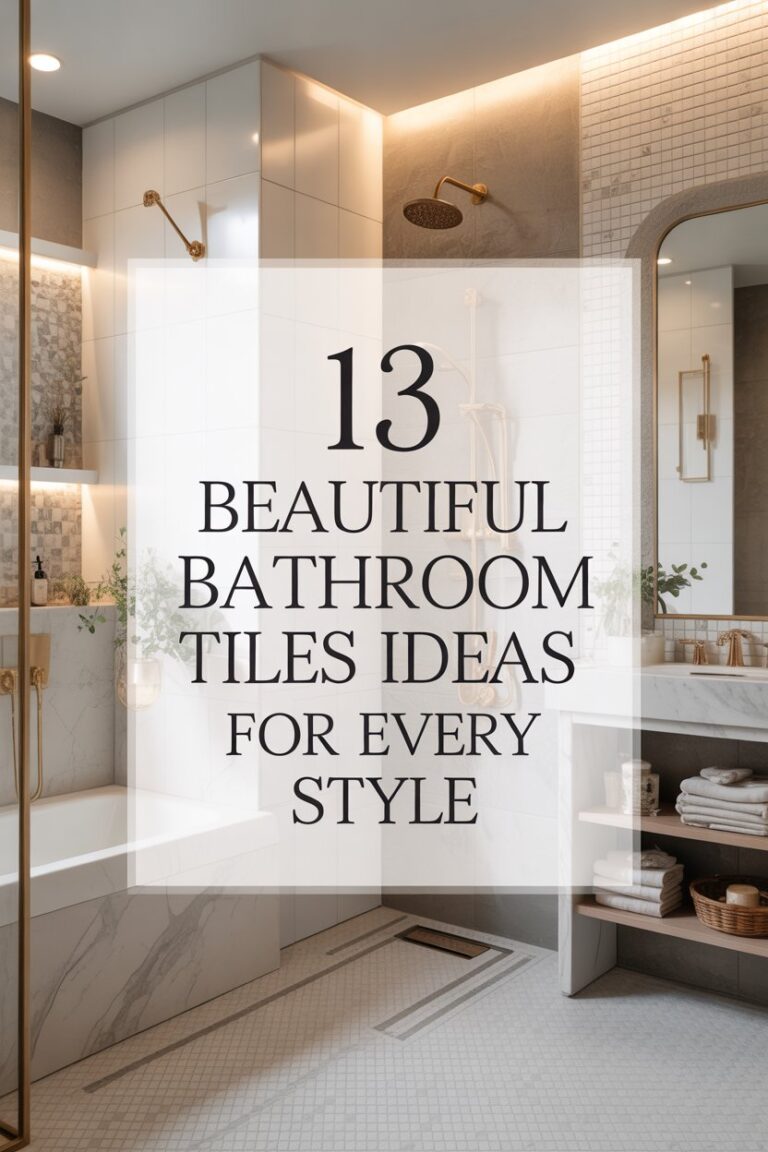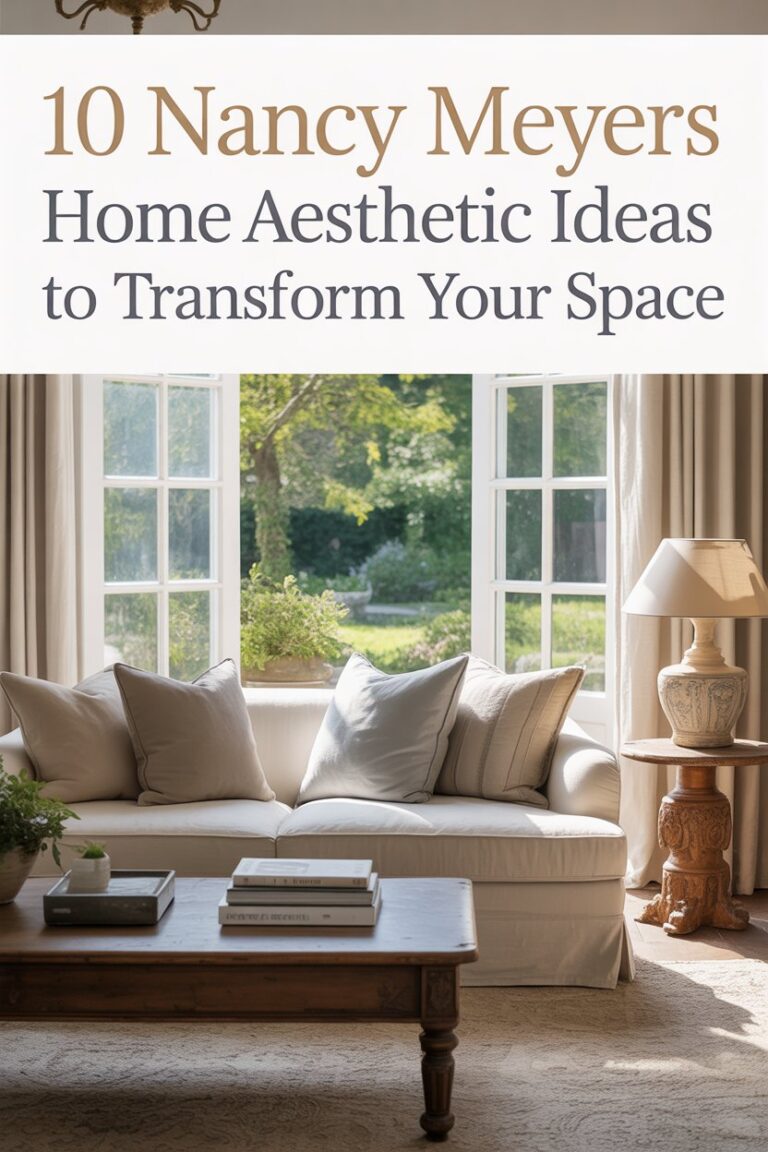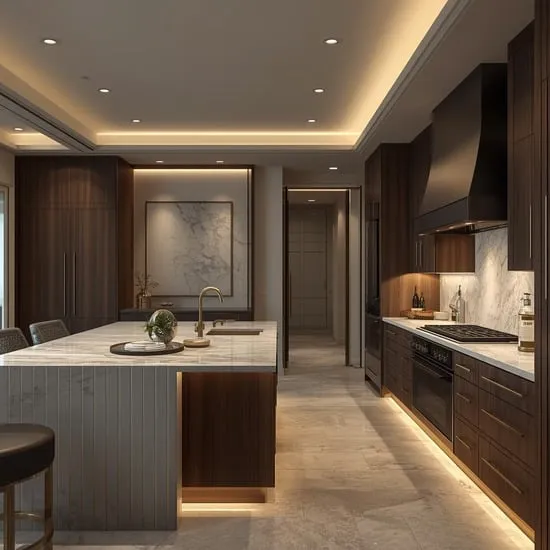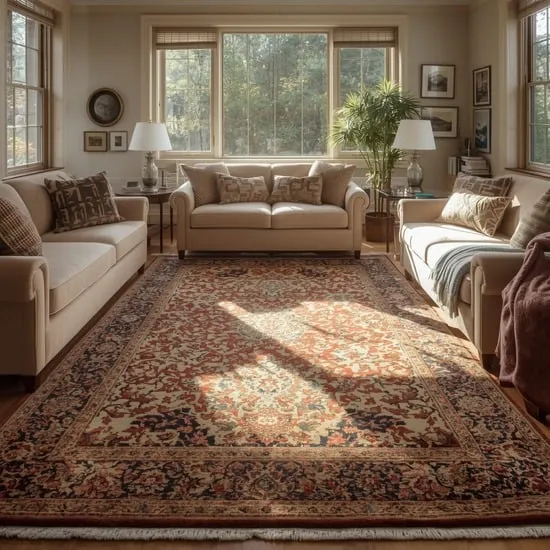The 60-30-10 Rule in Interior Design: A Simple Formula for Balanced, Beautiful Spaces
When it comes to interior design, achieving the perfect balance of color, texture, and style can feel overwhelming. But what if there was a simple formula that could make your design decisions easier? Enter the 60-30-10 rule in interior design—a timeless method used by professionals to create harmonious and visually appealing spaces. Whether you’re redecorating your living room, bedroom, or even your office, understanding and applying this rule can transform your home into a beautifully balanced environment.
What is the 60-30-10 Rule in Interior Design?
The 60-30-10 rule in interior design is a straightforward yet effective guideline that helps you achieve the perfect balance of colors in your space. It divides your design elements into three categories based on percentage:
- 60% Dominant Color: This is the main color in the room that sets the tone. It’s often used for walls, large furniture pieces, and flooring. The dominant color is the backdrop of your design, and it should create a cohesive and calming atmosphere.
- 30% Secondary Color: This is the complementary color that adds interest and contrast. It’s often used for furniture, curtains, and smaller accessories. The secondary color should work well with the dominant color, creating a sense of visual harmony without overwhelming the space.
- 10% Accent Color: The accent color is the final touch that adds a pop of excitement and personality to the room. It’s used sparingly on accessories such as throw pillows, artwork, or vases. The accent color should be bold and vibrant, drawing attention to specific areas and creating visual interest.
This rule simplifies the process of choosing colors for your space, ensuring that no color dominates or gets lost. But more than just a formula, the 60-30-10 rule in interior design allows you to create an environment that feels balanced, inviting, and perfectly tailored to your style.
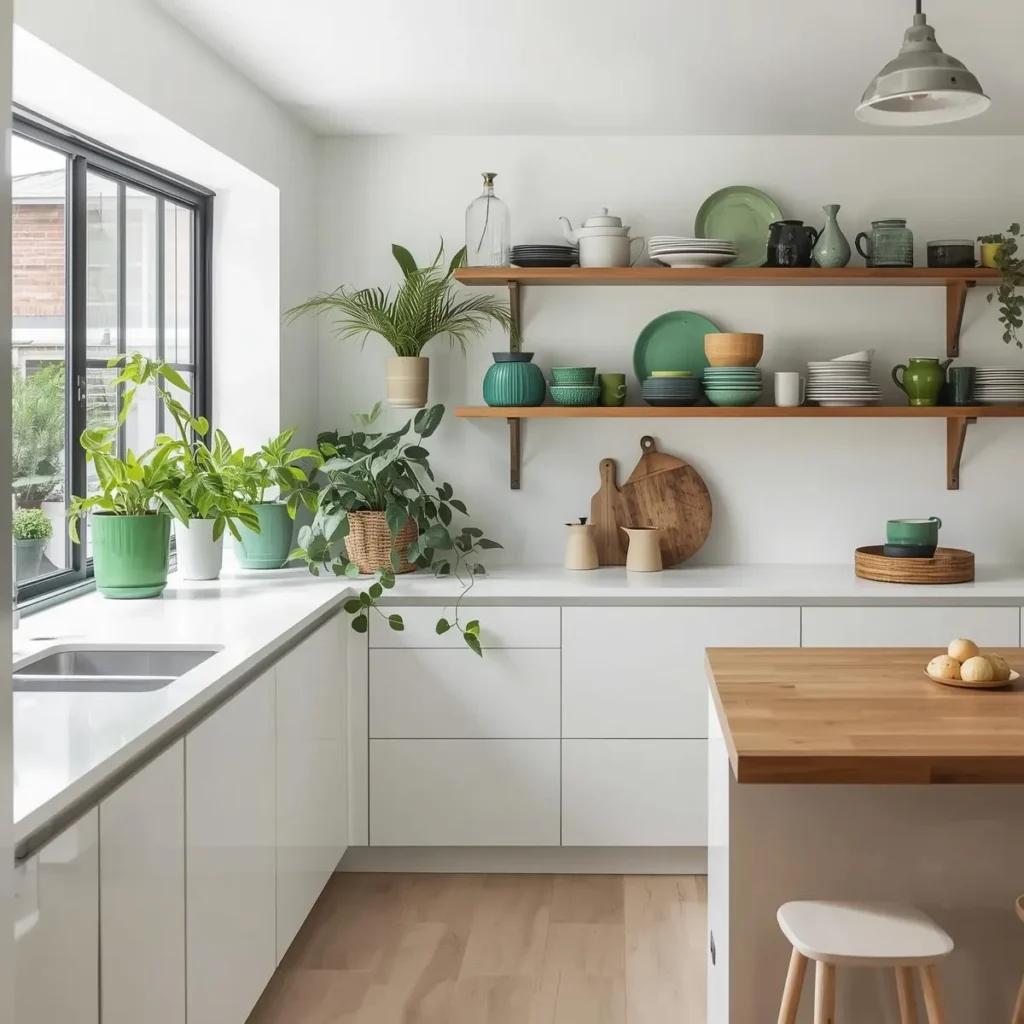
Why the 60-30-10 Rule Matters
Have you ever walked into a room and felt that something was “off,” but couldn’t quite put your finger on it? Often, the issue lies in an imbalance of colors. Too many bold colors can make a space feel chaotic, while too many muted tones can make it feel dull and lifeless. The 60-30-10 rule in interior design helps avoid this, creating a visually cohesive environment that feels just right.
By following this rule, you ensure that each color plays its part—your dominant color provides a solid foundation, your secondary color adds depth, and your accent color brings everything to life. The result is a room that feels thoughtfully designed and inviting, without any color overpowering the others.
How to Apply the 60-30-10 Rule in Interior Design
Now that you understand the basics of the 60-30-10 rule in interior design, let’s dive into how to apply it practically. Here’s a step-by-step guide:
1. Choose Your Dominant Color (60%)
Start by selecting a color that will define the mood of the room. This is usually a neutral or soft tone, such as whites, beiges, or grays, but it can also be a more vibrant color if you prefer. Consider the size and layout of your room. If it’s a smaller space, lighter tones can help make the room feel larger and more open. If you’re working with a larger space, you might choose a deeper or bolder color.
For example, in a living room, the walls and sofas might be in a neutral tone like beige, gray, or light blue, providing a calming, grounding presence that welcomes you into the space.
2. Select Your Secondary Color (30%)
Next, choose a complementary color for the secondary elements in the room. This color should contrast with your dominant color, providing a sense of depth and visual intrigue. The secondary color can be used on items such as furniture, rugs, and curtains.
If your dominant color is a soft gray, you might choose a deeper color like navy blue, forest green, or charcoal as your secondary color. These colors will add visual richness and give your room a sense of balance and sophistication.
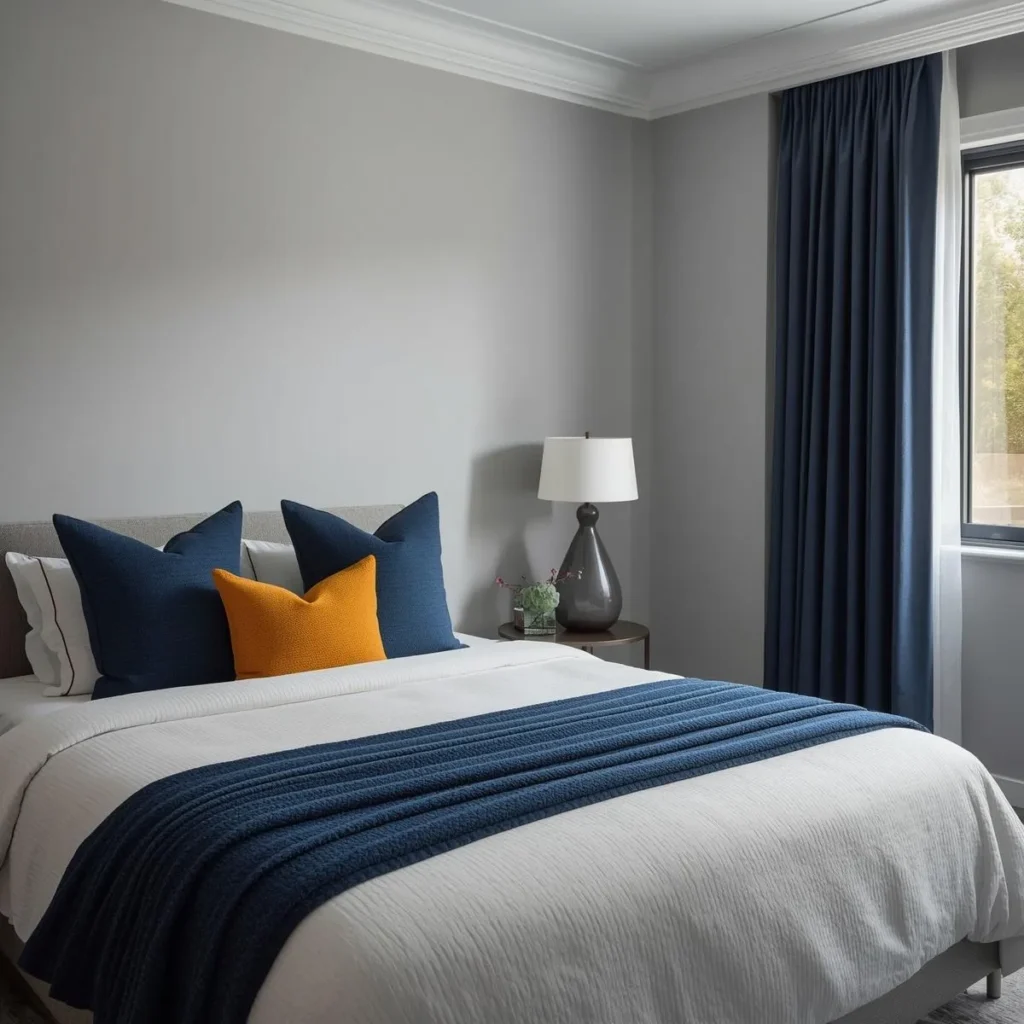
3. Add Your Accent Color (10%)
The accent color is where you can get creative. This is the fun part where you can add a bold pop of color, personality, and excitement. Think about throw pillows, artwork, vases, or lighting. The accent color should stand out, drawing attention to key areas in the room.
For instance, if your room features a light gray dominant color and a navy blue secondary color, you might choose a bright yellow or burnt orange as your accent. This small touch will create a vibrant focal point and bring energy to the room.
4. Stick to the Proportions
Remember that the 60-30-10 rule in interior design isn’t just about choosing the right colors—it’s about using them in the right proportions. While it’s important to have some flexibility in how you use each color, aim for the approximate ratio: 60% for the dominant color, 30% for the secondary color, and 10% for the accent color.
The key is not to let any one color take over, but instead to allow each one to play its role in creating a balanced, harmonious space.
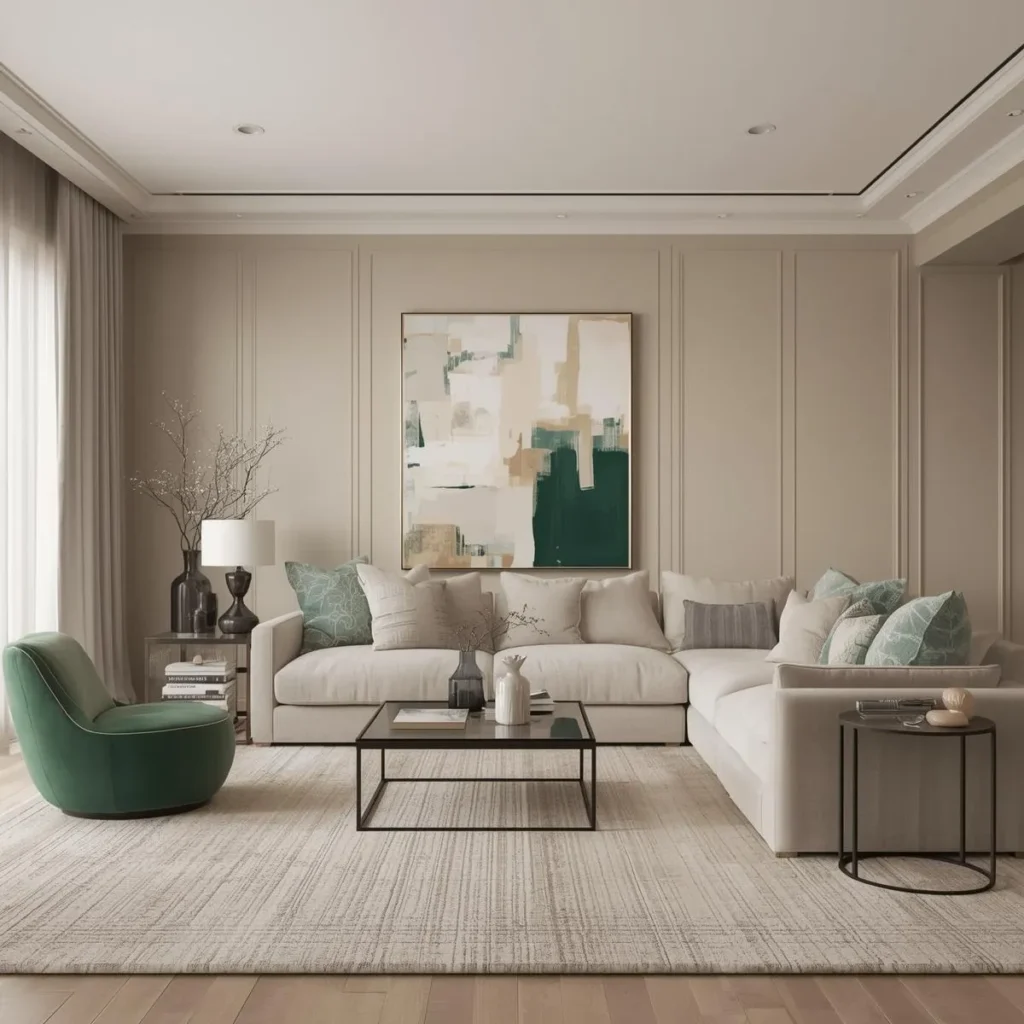
Emotional Benefits of Using the 60-30-10 Rule
Applying the 60-30-10 rule in interior design doesn’t just make your room look good—it can also have a profound emotional impact. The right mix of colors can help you feel more at ease, energized, or even inspired.
- Dominant Colors: Colors like light grays or soft neutrals evoke calm and serenity, which can make a space feel like a peaceful retreat.
- Secondary Colors: Rich tones like green or blue promote a sense of balance and stability, making the space feel comforting and secure.
- Accent Colors: Bold pops of color, like red or orange, can bring excitement, energy, and even a sense of playfulness to the room, making it feel alive and welcoming.
With the 60-30-10 rule in interior design, you’re not just arranging colors—you’re creating an environment that reflects your emotions and enhances the way you feel in the space.
Final Thoughts
The 60-30-10 rule in interior design is one of those simple yet powerful tools that can help you create a space that feels perfectly balanced, welcoming, and tailored to your personality. Whether you’re decorating a living room, bedroom, or office, applying this rule can make your space feel professionally designed, while still reflecting your unique style.
So, the next time you tackle a room makeover, remember the 60-30-10 rule in interior design. With a little planning, you’ll be able to create a space that feels both beautiful and harmonious, where every color has its place, and every element has its purpose. Your dream room is just a color away!

